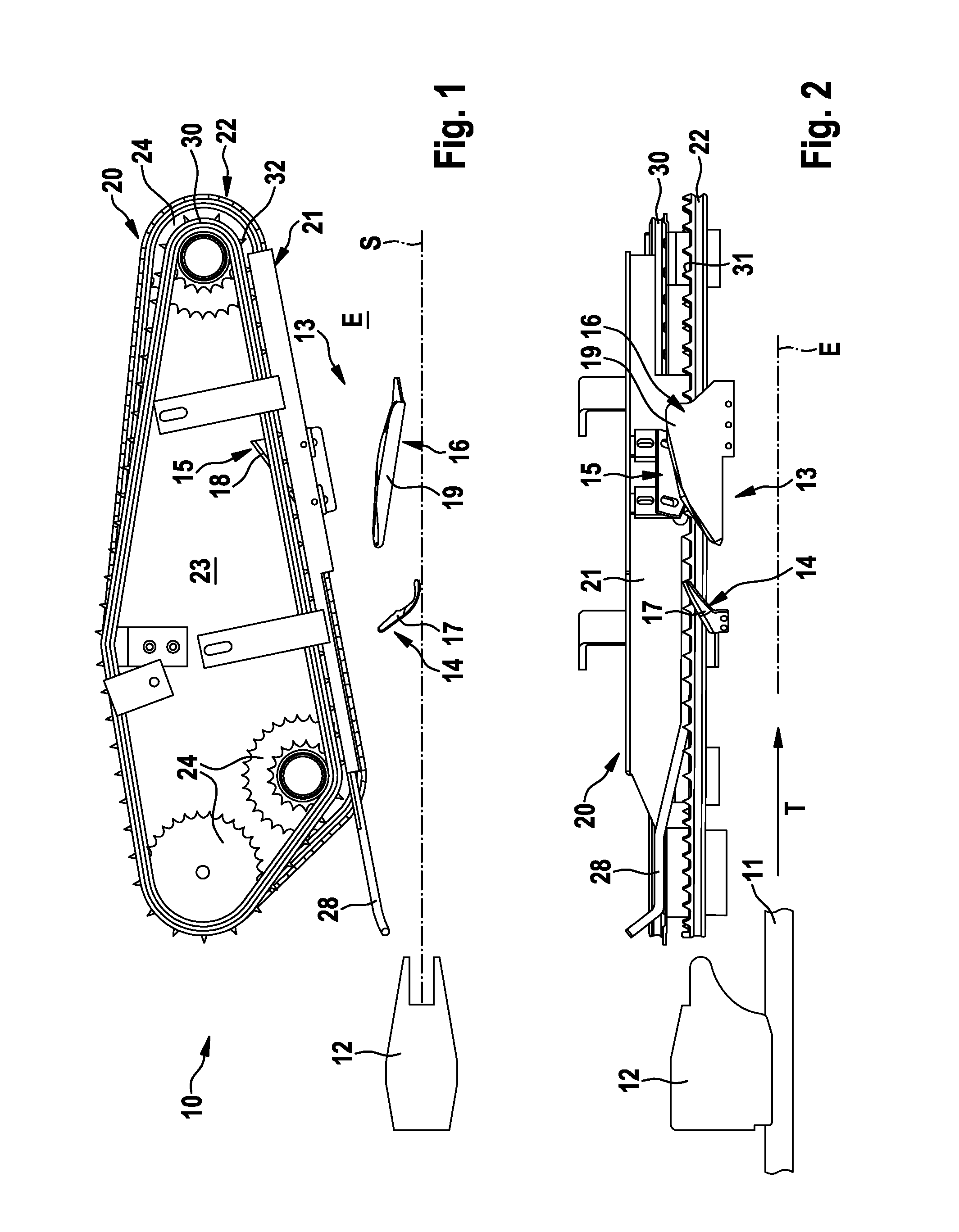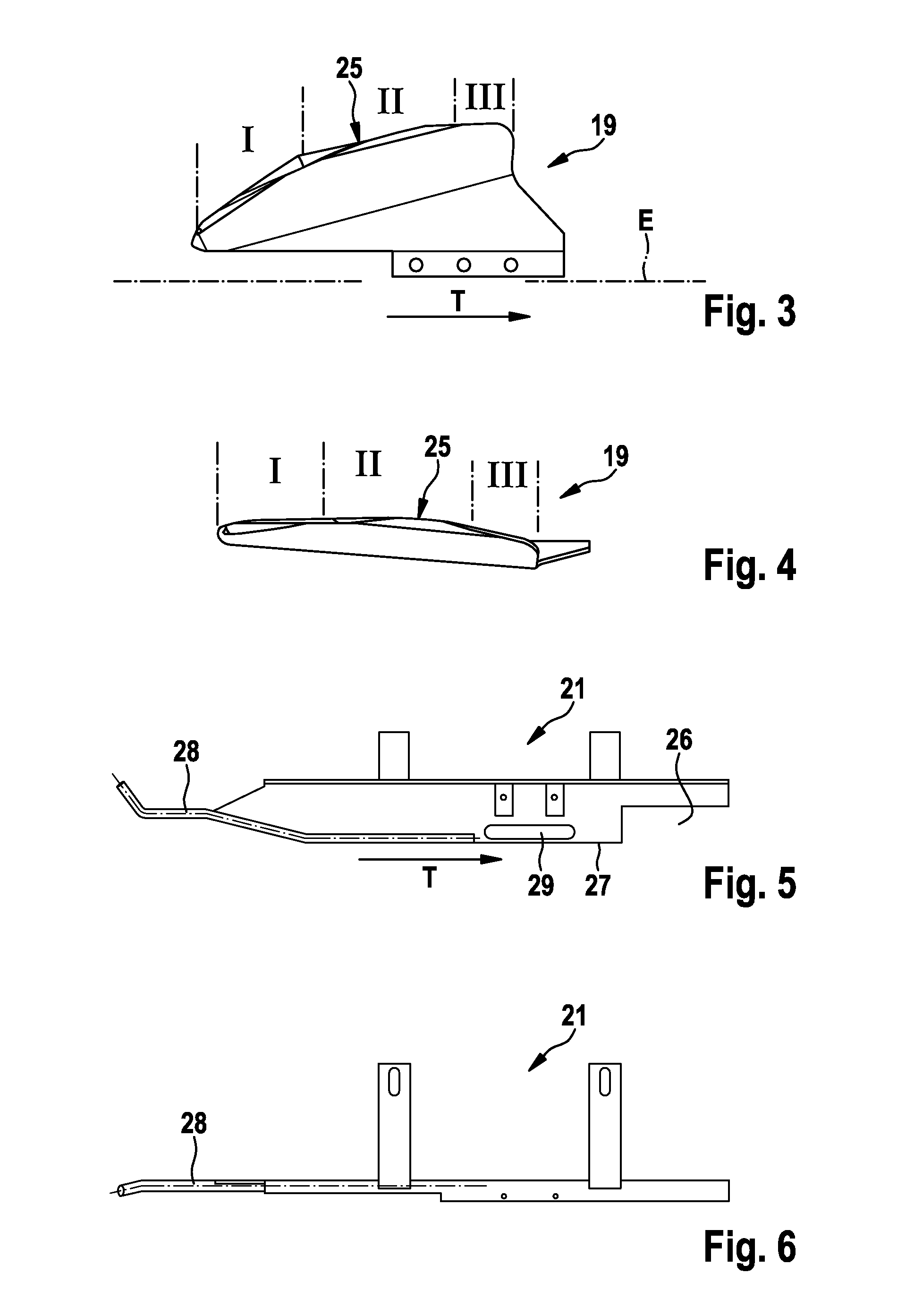[0010]This object is achieved by an apparatus of the kind mentioned hereinbefore by the fact that the cutting blades of the third pair form a cutting
station without a counter-support and each have a cutting edge which is constructed and designed to perform partial cuts leaving the end pieces of the wings on the poultry body, and that the lateral guide rails behind the separating device in the direction of transport T each have a recess to increase the
vertical distance between the guide rail and the conveying chain. By dispensing with a counter-support, the product can at least slightly escape the pressure on the product exerted by the cutting blades, so that it is made difficult to
cut through completely. The cutting edge of the cutting blades is, by contrast with the state of the art, constructed as a kind of stub edge, so that the length of the cutting edge is shorter than the known cutting blades.
[0011]As a result, in their cutting position the cutting blades leave a portion of the tendons and tissue parts in the region of the joint between the end pieces and the poultry body. In connection with the absence of a counter-support, the design of the cutting
station according to the invention is not able in any position to completely separate the end piece from the poultry body. Due to the recesses in the guide rails and the resulting increase in distance between the guide rails and the conveying chains, clamping of the wings or end pieces is eliminated. To put it another way, a
free space for the wings or the end pieces is created by the recess, so that they can be released from the operative connection between the guide rails and the conveying chains and can
shoot back to the poultry body due to the abrupt ending of the diverging transport. The further revolving conveying chain is then—due to the absence of an operative connection to the associated guide rail—no longer able to separate or tear the end pieces of the wings from the poultry body. The size of the recess is not geometrically limited in an upward direction, starting from the lower edge, and can also mean that the guide rail ends behind the separating device in the direction of transport T. Due to the combination of features according to the invention, it is possible to perform the premium
cut in a completely automated fashion in the case of poultry bodies.
[0012]An appropriate development of the invention as claimed is distinguished in that the cutting blades of the third pair are constructed as approximately triangular
delta blades, and the cutting edges facing towards the poultry body have in the direction of transport T a first, blunt section on the input side, a second, sharp-edged section in the middle and a third, blunt section on the output side. Due to the fact that, at least in the end region of the cutting blades, a blunt section is provided, a partial cut which leaves the end piece on the poultry body is assisted. The section formed on the input side, which is also blunt, makes it easier to thread the cutting blades to the preliminary cut performed by the first pair of cutting blades.
[0013]Advantageously, the third section of the cutting edge in the direction of transport T has a lower gradient than the first two sections, referred to the plane of transport E of the poultry bodies. The gradient of the cutting edge extends obliquely upwards in the direction of transport T, starting from the plane of transport E which is defined by the conveying means, so that the poultry bodies run up onto the cutting blades, which are stationary during cutting, in the fashion of a ramp. Due to the fact that the last section of the cutting edge has a lower gradient than the previous sections, which can also be zero (horizontal) or negative (descending), contact of the cutting edges with the poultry body or with the joint between the end pieces and the poultry body can be reduced or completely eliminated, which in turn assists the partial cut that leaves the end piece on the poultry body.
 Login to View More
Login to View More  Login to View More
Login to View More 


